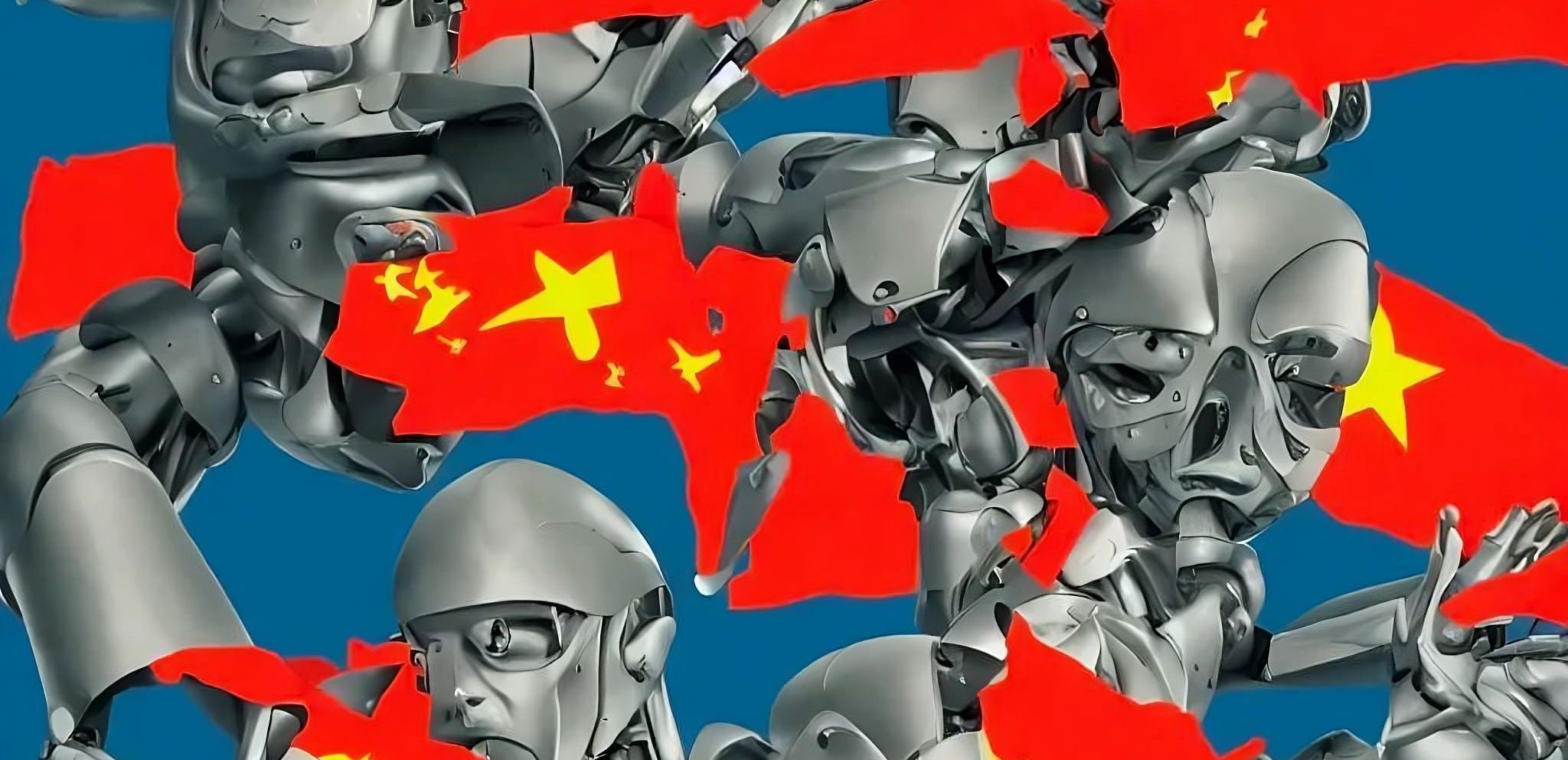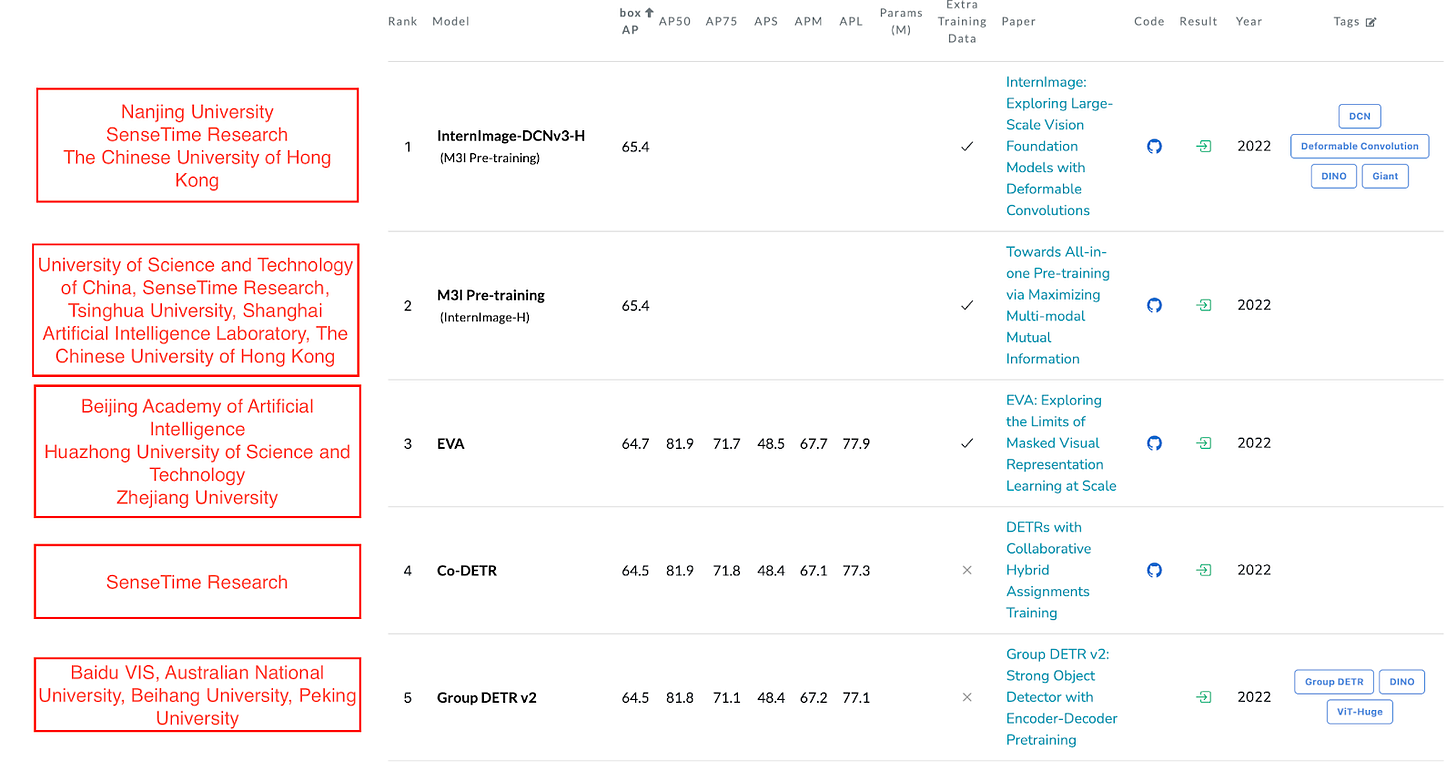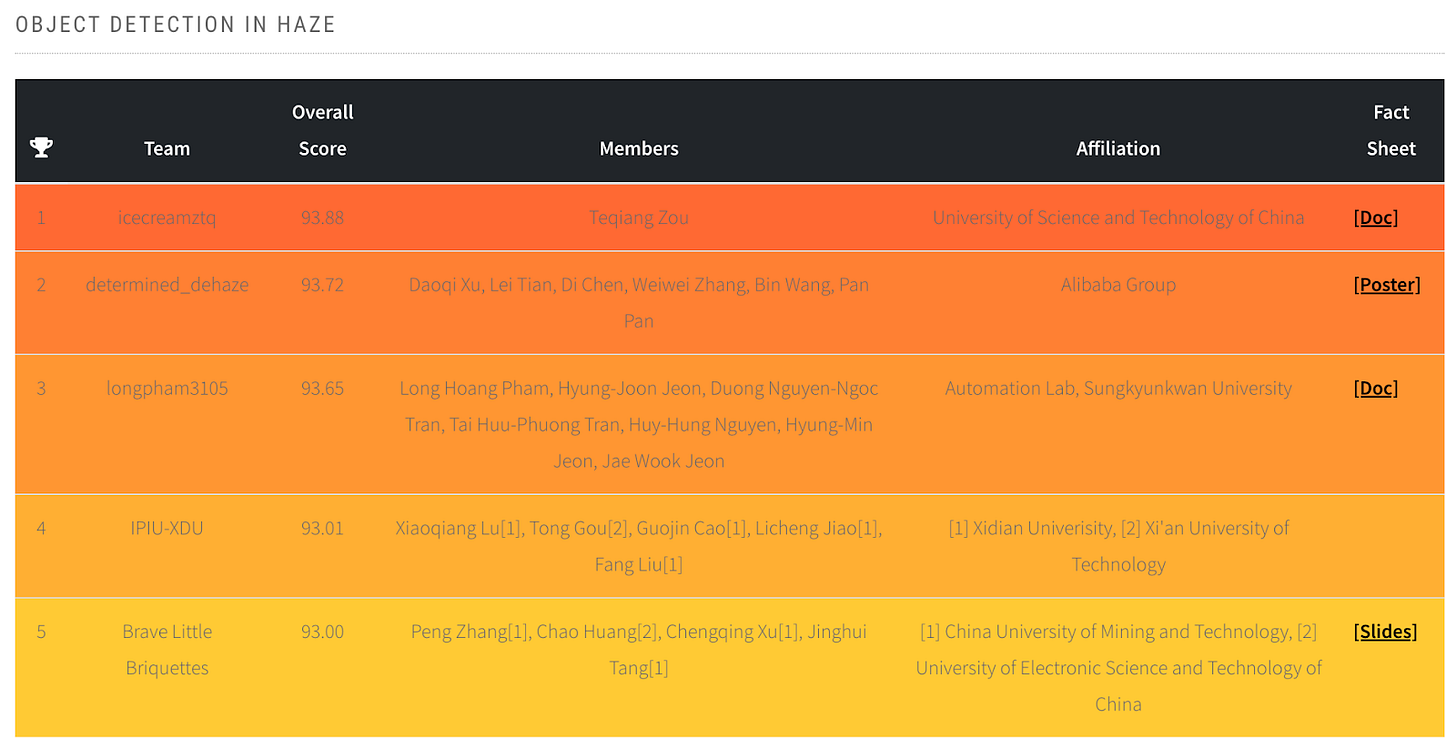The AI War and How to Win It
The battle for the future of the world
The AI War
The next era of war and deterrence will be defined by AI. The AI winner of this decade will be economically and militarily dominant for the next 50 years. The faster that we confront this reality, the faster we can act in ensuring America does not lose.
The gist of this post is:
AI will disrupt warfare.
China is currently outpacing the United States (for which there are numerous supporting facts).
The United States, both the government and AI technologists, need to start acting.
The AI War is at the core of the future of our world. Will authoritarianism prevail over democracy? Do we want to find out?
The Ukraine war is already demonstrating that the tech stack for war has changed. Technologies including drones, AI-based targeting and imagery intelligence, and Javelin missiles have allowed for a shocking defense of Ukraine against Russia, despite their nearly $300B in defense spending over the past 5 years.
The future is clear—AI-powered targeting and autonomous drones will define warfare. AI applied to satellite imagery and other sensor data has already enabled targeting and tracking of Russian troops and generals. Our legacy military platforms, while still important, will be disrupted by cheaper autonomous drone fleets. Aircraft carriers are giant targets in the sea compared to autonomous, adaptive drone swarms.
We are in the midst of a renaissance of AI in the commercial sector. In the past few years, breakthroughs have enabled AI systems to generate imagery, text, code, and even reason. The pace of AI research is following its own Moore’s law—every 2 years, the number of AI papers published per month doubles. As venture capitalists ogle over the potential of Generative AI to change knowledge work, we are not addressing the obvious application of AI towards military power, and the very clear risks that America will be outpaced.
A recent AI system, CICERO, achieved human-level performance in Diplomacy, a strategy game requiring negotiation and manipulation of other human players. This result, along with dominance of AI in chess, go, and poker, paint a precursor to the future of war. An AI warfighter will handily dominate an adversary through strategic brilliance, faster decision-making, and greater situational awareness. What’s more, autonomous drone fleets (air, sea, and land) will tactically outcompete human operators in velocity and coordination. While this hasn’t happened yet, it is only a matter of time. Based on the pace of progress with AI technology today, I believe this is less than 10 years away.
All that will matter in a future conflict is our technology—AI will devise, execute, and update our combat strategy. Our technology is our strategy.
There is precedent for technological disruption of warfare. I grew up in Los Alamos, New Mexico, the birthplace of the atomic bomb. The development of nuclear weapons in 1942 ushered in a new era of the nature of war and deterrence, and is one of the largest contributors to the Pax Americana, the unprecedented relative peace in the world since the end of World War II.
The continuation of Pax Americana rests upon our ability to navigate and maintain the lead in the AI race, which in turn will ensure the military and economic leadership of America. The facts today on our relative standing against China are not good, and need to be confronted head-on. We will not win by standing still.
The China Threat
China deeply understands the potential for AI to disrupt warfare and ultimately overtake the USA, and is investing heavily to capitalize on the opportunity. Let’s walk through some facts.
Fact 1: China considers AI as a “historic opportunity” for “leapfrog development” of national security technology, per China’s 2017 National AI Development Plan.
Their belief is AI will rhyme with how China surpassed America in fintech, where the American mature existing financial services industry and regulations ultimately enabled China to race ahead with a more digital and AI-enabled fintech stack.
More specifically, they believe that the United States will fall into a classic Innovator’s Dilemma. We will over-invest in mature systems and platforms, and underinvest in new disruptive technologies such as AI that would make our mature systems vulnerable or obsolete. Meanwhile, China, less encumbered by an existing defense industrial base, will race far ahead on AI.
Their long-term vision for how AI will disrupt the battlefield is also clear, and they are investing to accomplish it. As one Chinese official has said1:
“In future battlegrounds there will be no people fighting. By 2025 lethal autonomous weapons [will] be commmonplace and ever-increasing military use of AI is inevitable. We are sure about the direction and that is the future…
Mechanized equipment is just like the hand of the human body. In future intelligent wars, AI systems will be just like the brain of the human body. AI may completely change the current command structure, which is dominated by humans to one that is dominated by an ‘AI cluster.’”
Fact 2: This is already happening—China is outspending the United States on AI technology for defense, both in absolute terms and proportionally.
China’s military arm, the People’s Liberation Army (PLA), spent between $1.6B and $2.7B on AI against an overall defense budget of $178B in 20202, whereas the US Department of Defense (DoD) spent only between $800M and $1.3B on AI against an overall DoD budget of $693B over the same period3.
China is spending between 1% and 1.5% of their military budget on AI while the United States is spending between 0.1% and 0.2%. Adjusted for the total military budget, China is spending 10x more than the United States.
Fact 3: This is against a backdrop that in many DC wargames of the past few years, China wins.
The quotes are damning:
“The United States gets its ass handed to it”
“We are going to lose fast”
“China ran rings around us… they knew exactly what we were going to do before we did it”
And this isn’t even because of AI—it’s due to China’s already advanced intelligence, cyber, and electronic warfare capabilities, and an American hardware portfolio of fighter aircrafts and aircraft carriers that are mismatched to a conflict in the Indo-Pacific region. As a spoiler, these problems do not get better with AI.
Fact 4: From a pure technological standpoint, China has already surpassed the United States in computer vision AI, and is a fast follower on large language models (LLMs).
China is showing that in tactical AI capabilities, such as computer vision for greater sensing and awareness, they are handily ahead. And while America currently leads on more strategic AI systems, such as LLMs which will underpin future command-and-control systems, China is at most 1 year behind.
The current top 5 algorithms on the global leaderboard for image recognition on COCO (the established benchmark) all come from Chinese companies and universities.4
In a global 2022 challenge on aerial imagery object detection in haze, one of the most blatant military applications of computer vision technology (battlefield object detection), the first, second, fourth, and fifth place winners were all Chinese companies or universities, with the sole foreign challenger being a Korean University.
And in large language models (LLMs), which are the current state-of-the-art in natural language understanding and reasoning, they are fast followers to the leading American company OpenAI. The Beijing Academy of Artificial Intelligence (BAAI) and Tsingua University released a bilingual English & Chinese model GLM-130B in August of 2022 that outperforms GPT-3 175B, the leading American model. Now, OpenAI has been improving their technology for an upcoming release, but regardless the Chinese firms are within 1 year of the United States.
Fact 5: China has also been shown to heavily use social media manipulation and disinformation in Taiwan, particularly during elections.
They will show no mercy in using modern generative AI of both text and imagery to massively amplify their ability to sow division within the country and discredit US military activities. Below, I used GPT-3 to generate a fake article about the United States renouncing support of Taiwan. As you can see, the technology is incredibly effective.
Fact 6: China has already shown willingness to implement AI ruthlessly for government purposes, most notably in facial recognition for Uyghur suppression.
China has developed an ecosystem of AI startups (Yitu, SenseTime, Megvii, and CloudWalk) which developed algorithms to track Uyghurs in Xinjiang. While bone-chilling, it is not hard to draw the line from their development of facial recognition AI to China leapfrogging the US in military AI technology, and using that technology to further its authoritarian regime.
Fact 7: Perhaps the greatest concern is the time pressure in this race imposed by the potential invasion of Taiwan in the next 5 years.
There is a high risk of a Taiwanese invasion within the next 5 years, and it could even be as soon as 2023 according to the US Chief of Naval Operations, Michael Gilday.
An invasion of Taiwan would force our hands—we would need to fight with whatever military capability we have at the time, and we do not want to be caught flat-footed on AI.
How to Win It: AI Overmatch
The United States needs to change our trajectory on AI for defense. We are falling behind on AI, and with it losing American leadership.
I propose a strategy for AI Overmatch to ensure that we have an overwhelming advantage on AI. What follows are some clear recommendations for quickly increasing our pace and winning. To those new to the topic of the AI War, these recommendations might seem overly specific—that is intentional. Surgical action is needed to reignite our engines.
We must recognize that our current operating model will result in ruin. Continuing on our trajectory for the next 10 years could result in us falling irrecoverably far behind. Why do large organizations often continue on the path to their demise, even if the future is painfully obvious? The reason is inertia—bureaucracies will continue to glide deep into the abyss for an eternity.
Recommendation 1: Data supremacy is an absolute requirement for the AI war.
Tactically speaking, AI always boils down to data. Every instantiation of deep learning has been ridiculously data-hungry, and recent results show that even large language models, which are often trained on most of the internet, are data-starved (Chinchilla scaling).
The success of an AI modernization is dependent on building and maintaining data supremacy. If you observe how the tech giants (Google, Facebook, Amazon, etc.) maintain their algorithmic leads versus their competitors, it all stems from runaway data advantages.
For defense AI, the internet is not enough. Most will need to come through our military assets and sensors. America has by far the largest fleet of military hardware. If we can successfully turn this platform advantage into a data advantage through an investment into data infrastructure and data preparation, we can get ahead and stay ahead.
It’s important to call out—we are not ahead today. Most of the data within the military gets thrown away, or lives on hard drives that will never see the light of day. The scale of our military fleet is currently not contributing to data supremacy.
In May 2021, the Deputy Secretary of Defense Kathleen Hicks released a memorandum for the DoD to create a data advantage, kicking off the creation of the Chief Digital and AI Office (CDAO). That is only a start to a Herculean, yet critical effort. We either will build data supremacy, or we will invariably lose in the long-run.
Recommendation 2: AI-enabled capabilities will be 10x more lethal and effective in a decade. We need to have a 10-year plan to shift 25% of the DoD budget towards AI-enabled capabilities by 2032.
We need to match China’s ability to plan on long, 10-year time horizons. It’s imperative that we begin charting a long-term path towards dominance in defense AI.
Given any existing military capability, it will be more lethal, effective, and efficient if enabled with AI and autonomy. As the technology improves, it is not an exaggeration to say that AI will enable 10x gains. Some simple examples:
A fully autonomous drone swarm will be nearly impossible to subdue or disarm, and doggedly pursue any objective it is given. As we’ve seen in Ukraine, an effective drone can neutralize nearly any adversary—and a dominant AI agent will be able to outmaneuver even an AI-enabled foe.
AI-enabled intelligence and automated target recognition will limit the fog of war. We will be able to immediately identify targets and neutralize them faster than any adversarial human could react. As Sun Tzu once said, “Know your enemy, know yourself, and in one hundred battles, you will never be in peril.”
By the end of the decade, any military capability that is not AI-enabled will be rendered nearly useless against an AI-enabled adversary, just as Russia’s tanks have shown to be inept. It would be silly to continue investing in non-AI capabilities when they will clearly be outdone. We can be sure China is thinking along the same lines, as their public statements match a 10-year time horizon for AI-enabled warfare.
The clock must start ticking. Either we will modernize our existing military capabilities with AI, or we need to retire them and make room for new AI-enabled capabilities.
We will be caught flat-footed unless we start charting a path to the future where AI is at the core of our warfighter, both at tactical and strategic levels. We cannot afford to invest into non-AI systems.
Recommendation 3: The United States needs to disrupt itself with AI Grand Challenges within the Department of Defense.
The largest AI program within the Department of Defense is still Project Maven, which was started in 2017. In the past 5 years, the United States has still not started, let alone operationalized, a major AI capability that could disrupt our current warfighter. We are falling perfectly into the trap that China has called out—we are too focused on maintenance of legacy technology to invest into disruption.
This is untenable. The United States needs to act quickly in starting up and dramatically accelerating more programs to fund AI Grand Challenges. We are running out of time before a future Taiwanese invasion, and we need to get started now if we want any AI to be deployed in time.
There are a number of candidates for transformational AI Grand Challenges:
AI for all-source intelligence
AI battle planning and COA generation
AI for cyber vulnerability detection
AI for automated target recognition for missiles
Any of these could be critical capabilities in future conflicts—we just need to pick a few and get started.
Without seriously funding some AI Grand Challenges, we are running out of time and allowing China to leapfrog us. The United States is spending less than 0.2% of our military budget on development of AI technology—we should look towards rapidly 10x-ing our investment through these Grand Challenges.
Let’s stop experimenting with AI. Let’s build production AI programs with mission relevance.
Recommendation 4: The United States needs to invest into rapidly training and skilling our military commanders and personnel on AI.
Even with advancements in technology—humans always pay the price of war. Even with AI, wars will be fought by people. The United States invests heavily to ensure that its military has the best equipment, training and leadership in the world. Investments in AI should be no different.
Beyond simply training service members on AI fundamentals, the United States should train commanders & personnel to use AI as the component that will make multi-domain warfare a reality. Commanders must know how to use data as a military asset to fuel AI Overmatch.
Historically, the country that can integrate new technologies into warfighting concepts and doctrine dominates. There’s no reason to believe this will be different. The Department of Defense needs a revamp of doctrine and warfighting concepts that recognize the AI-enabled future, not simply bolt AI on to concepts from the last war.
At Scale, we are fully committed to supporting the United States and its allies. This is one of the few true missions of our time. We cannot sit by the sidelines and watch the rise of an authoritarian regime. It is in moments like this that technologists can either rise to the challenge, or stand idle.
In the tech industry, we often talk about missions. They are often frivolous—do they really change the world or save lives? This mission, on the other hand, really fucking matters. The AI War will define the future of our world. Will future generations live under authoritarianism or democracy?
We have been active in working with the Department of Defense, and developing products for what we believe to be defining technologies of the future of AI warfare. I intend to share many of these technologies in the coming months, especially given the deafening urgency of the current situation.
I encourage my fellow technologists to recognize the austerity and severity of our times, and commit themselves to defending America. While I find it shocking that most American AI companies have not chosen to support national security, I do hope others join us.
We have to fight for the world we want to live in. It’s never mattered more.






